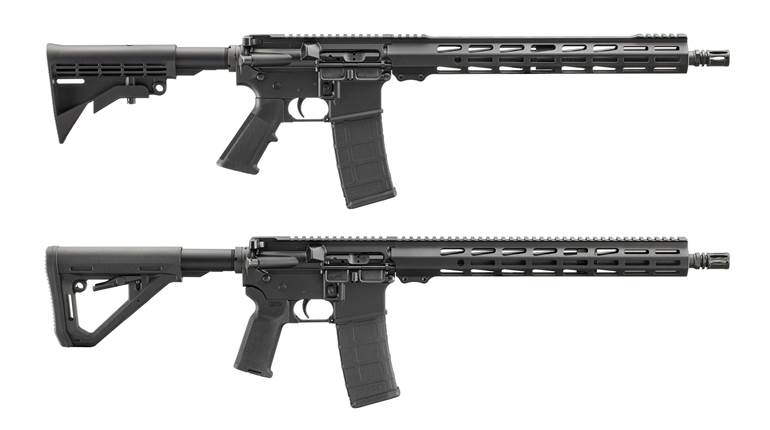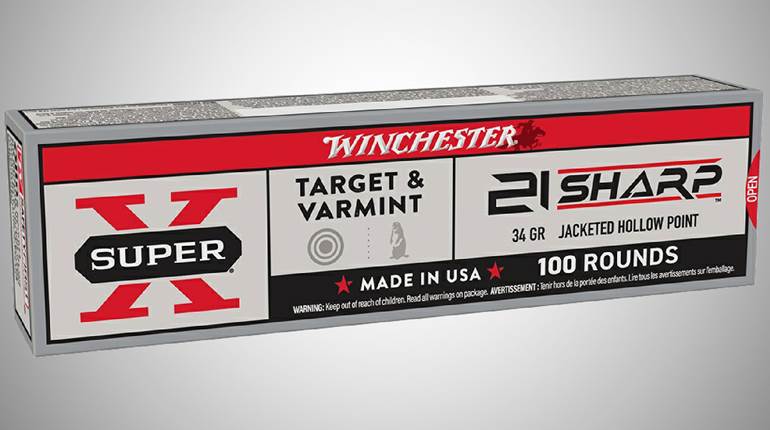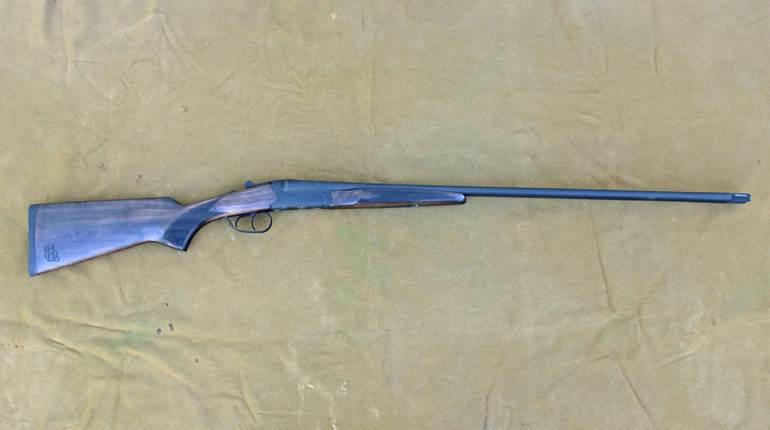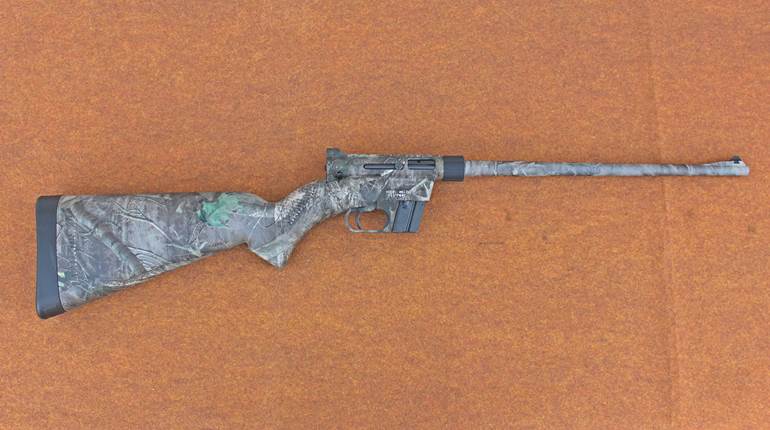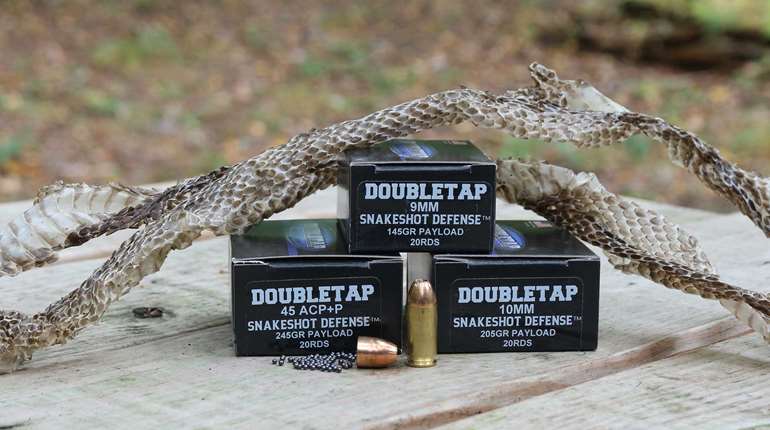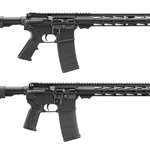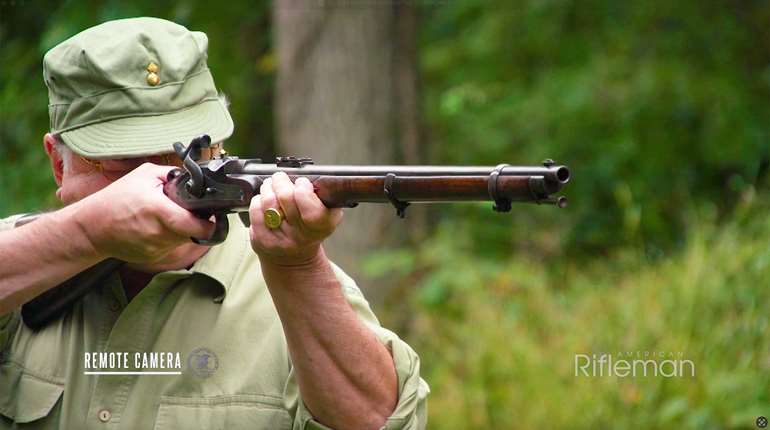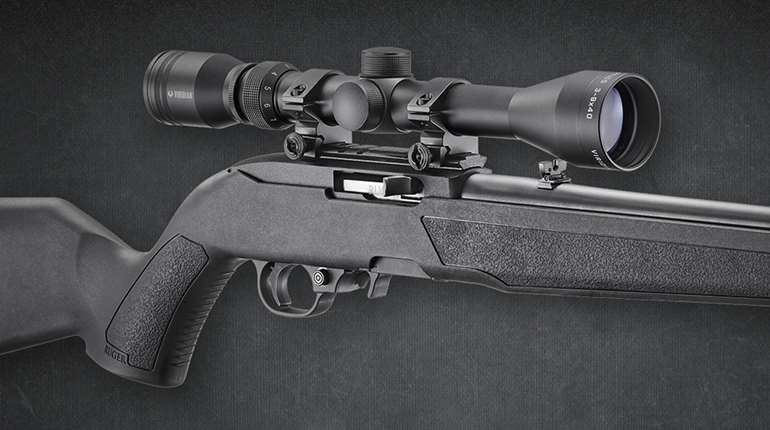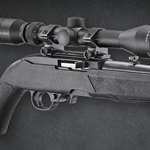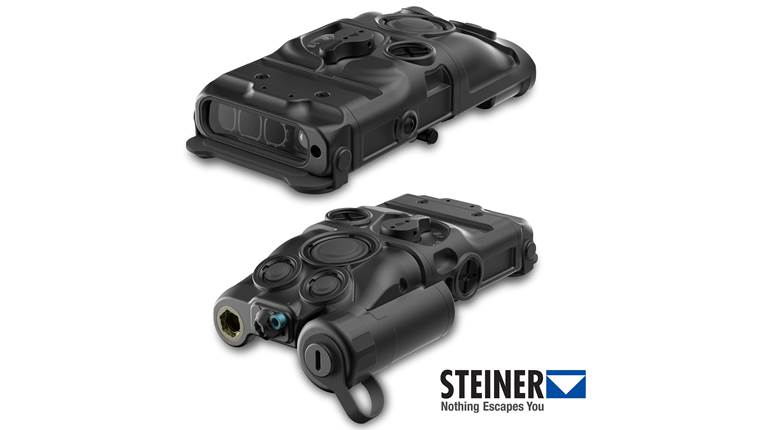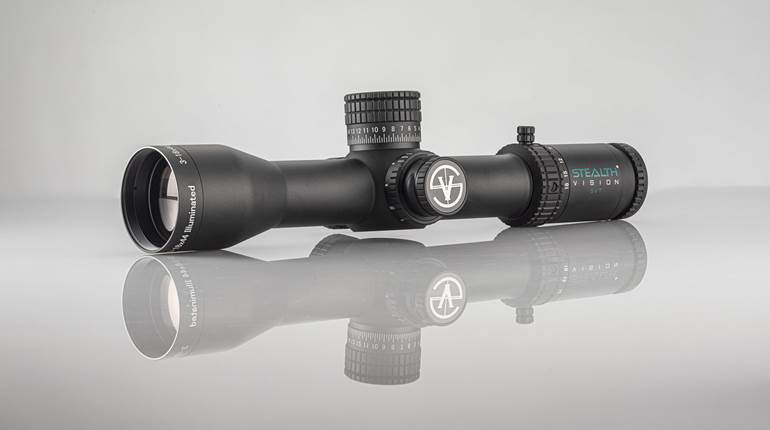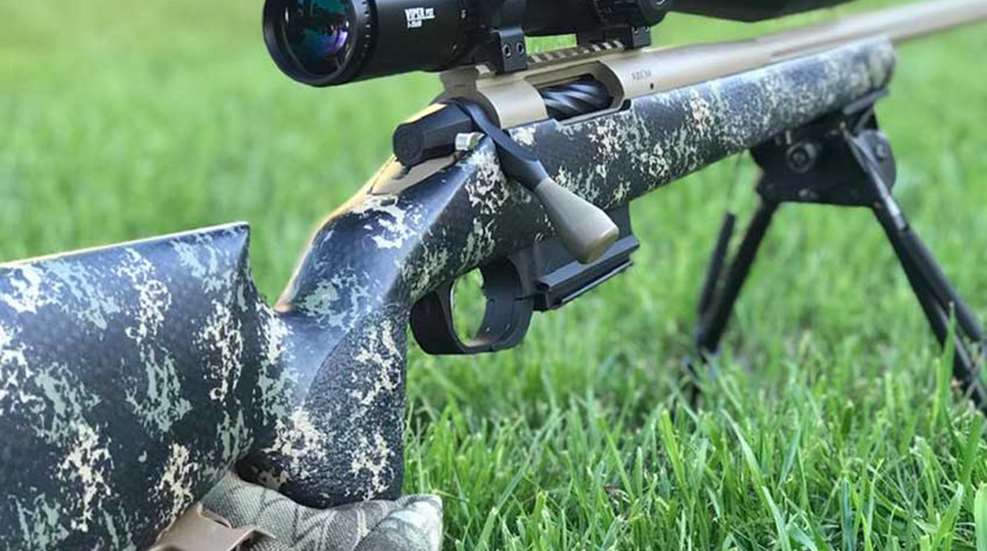
Shooting sports enthusiasts who delve into the inner workings of their rifles are familiar with the idea of 'tuning' the action. But what about trading out the rifle’s factory-installed shoulder stock for a model that's been just as carefully 'tuned' as the action? How would it effect the gun’s handling to have a composite stock that's been professionally assembled to your specifications, right here in the United States, by a company that's been building some of the best stocks available for over 40 years?
To find out, I checked in with the customer service team at McMillan Fiberglass Stocks. This company produces some of the strongest and lightest rifle stocks available, and each one is built to order. McMillan stocks are highly prized by top competitive marksmen and military snipers around the world. But the company has not limited its products to just those two markets. Its wide variety of stock models, optional features and color selection make McMillan stocks a great fit for civilian applications as well.
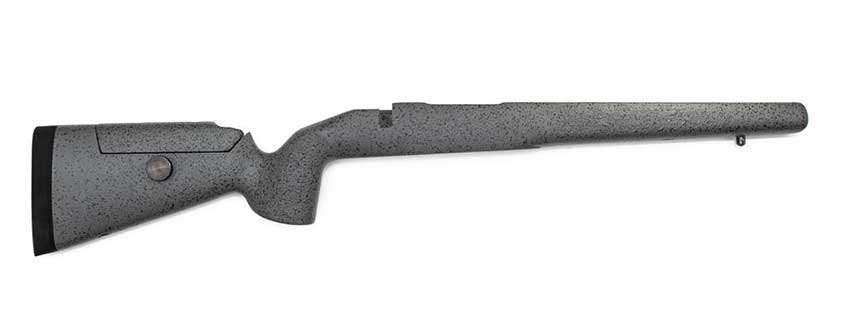
I began the ordering process by filling out and submitting the company's online form. It's helpful to know the rifle action’s make and model along with having a good idea of how the gun is going to be used most of the time. But don't worry if you’re not 100 percent sure about what features you want or if you run into some unfamiliar lingo on the form. A member of the service department will give you a call and go over your options before pinning them down, just like the team did with me.
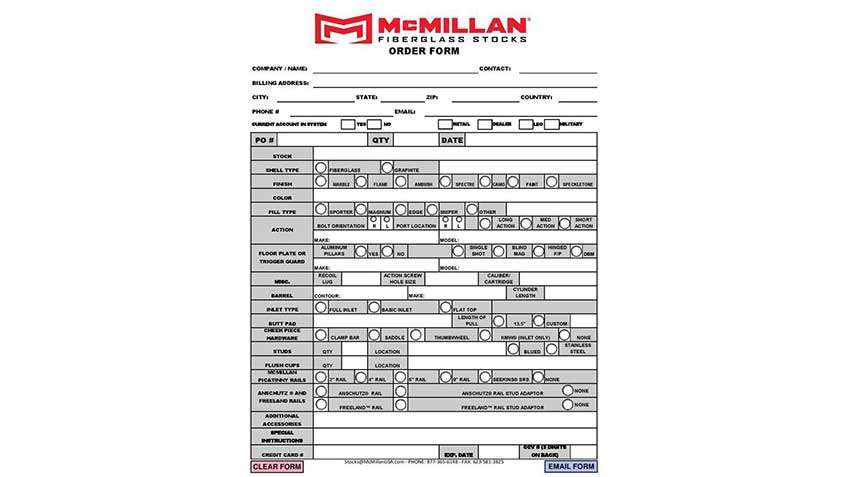
In this case, I was looking for a fixed-length shoulder stock for a Brownells-exclusive Howa 1500 Short-Action barreled receiver with a threaded 24" Heavy Barrel chambered in 6.5 Creedmoor. I wanted a stock capable of shifting comfortably between bench-rested target shooting and hike-the-mountain big game hunting events. I opted for the longer, heavier barrel for improved accuracy with this relatively soft-shooting rifle cartridge, so I was hoping we could trim some weight out of the stock to lighten the finished rifle.
After chatting for a bit, we took a closer look at the company's Adjustable Game Warden stock. This hybrid model blends the rounded fore-end and fixed recoil pad of a hunting stock with the pistol grip and cheek piece of a tactical stock. The adjustable portion is the cheek piece which can be raised or lowered depending on the optic used.
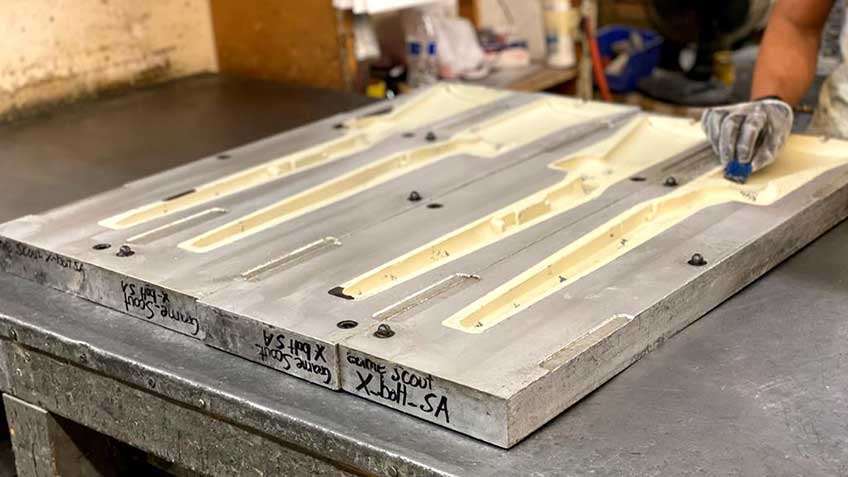
The feature set was further fleshed out with front and rear metallic QD/Flush Cup sling ports added to the left side of the stock to support a two-point shoulder sling. A removable 4" McMillan Picatinny rail was added to the underside of the fore-end to support a bipod. This rail also provides a third QD sling port. Last, but not least, a 1" Pachmayr Decelerator recoil pad was selected from the options available and the length of pull adjusted to fit my frame size.
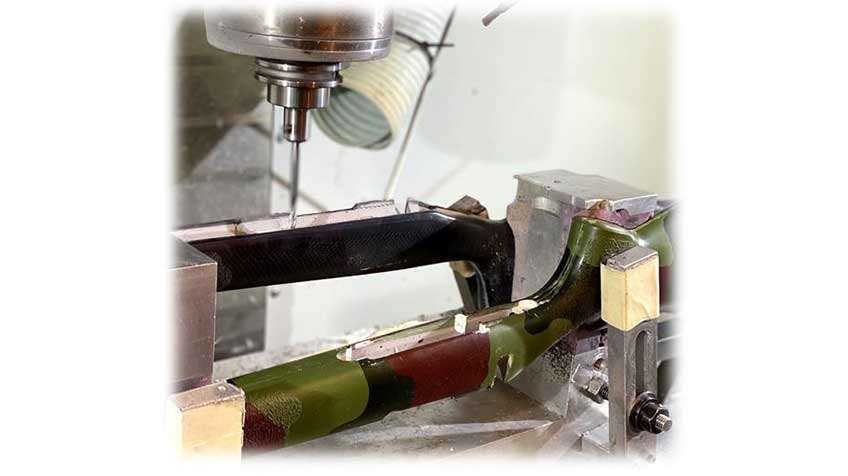
Now we were ready to discuss the fiber, fill and finish options. McMillan’s composite stocks are constructed by layering fiberglass or carbon fiber (graphite) into aerospace-grade resins to form the outer shell of the stock. The interior of this shell is then hand-packed with a dense proprietary resin and fiber glass fill ranging from light weight to magnum depending on the desired balance and weight.
The stock’s color(s), can be either molded-in using different colors of resin or painted on to the surface. The molded-in coloring is more durable.
Next, it was time to decide if I wanted fiberglass or carbon fiber for the shell. Fiberglass is heavier and more flexible than carbon fiber, with a much broader range of color and finish options. Carbon fiber is stiffer and lighter but it’s available with fewer finish options. Heavier fiberglass stocks are more stable, while lighter carbon fiber stocks are more portable. Whichever you pick, McMillan adjusts the fill material so that the finished stocks will have the same levels of rigidity, strength and durability no matter which fiber or weight you choose. In the end, the defining features of fiber glass or carbon fiber boil down to weight and cosmetics.
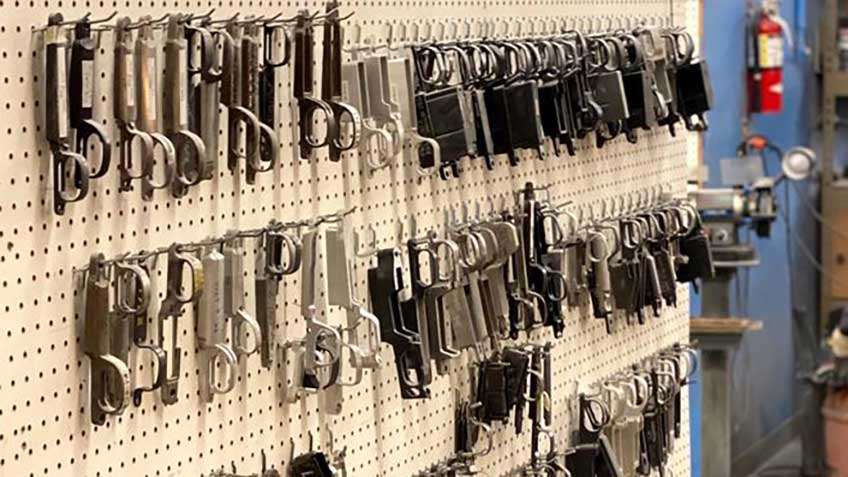
My first priority was weight-reduction, so building the Adjustable Game Warden using carbon fiber along with the company's lightweight Edge fill material was the way to go. But the cosmetics were nicely handled as well. The service team was kind enough to send me an image of a carbon fiber stock with a molded-in Woodland Ambush camouflage pattern. The smoky translucent resin shows the tight woven pattern of the carbon fiber beneath, which is really sharp-looking! Two molded-in colors were added, a woodland beige and medium tan to blend well with the color of the Cerakoted action and the foliage of the high mountain desert region where I live.
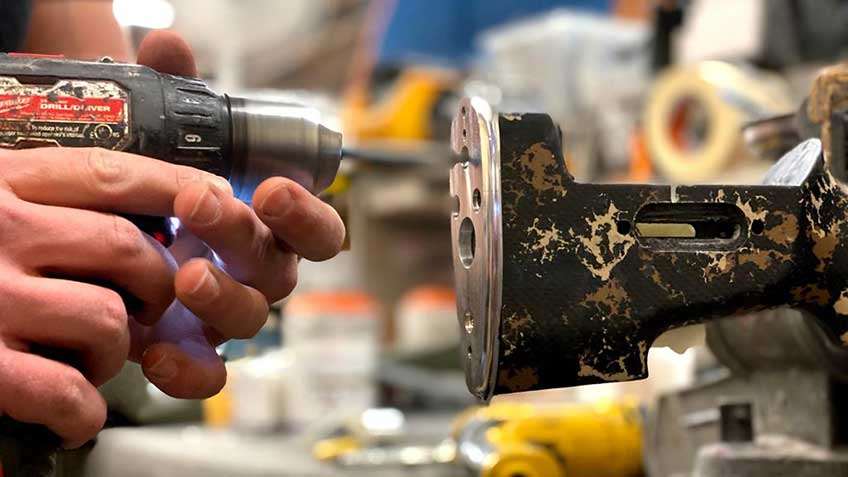
With the order form completed and all the features defined, the McMillan team went to work. No up-front payment or security deposit was required. Customers pay when the work is complete. Typical turnaround times for stock orders are usually around four to six months with less common rifle fits taking between 8 to 12 months. Why does it take so long? Because each composite stock is built by hand, when the order is placed, in small batches of around 10 units at a time. While there is a great deal of innovation that goes into the manufacturing of these stocks, mass production is not a part of the process.
The composite stock's assembly begins with a pair of precision molds that will form the left and right sides of the stock. These molds are made in-house by McMillan staff in order to maintain quality. They are inspected, manually cleaned and lubricated each time they are used. If the stock has a molded-in color or pattern (camouflage, marbled, etc.), it's applied by hand to the interior mold at this stage. The rest of the resin and fibrous materials are then layered in.
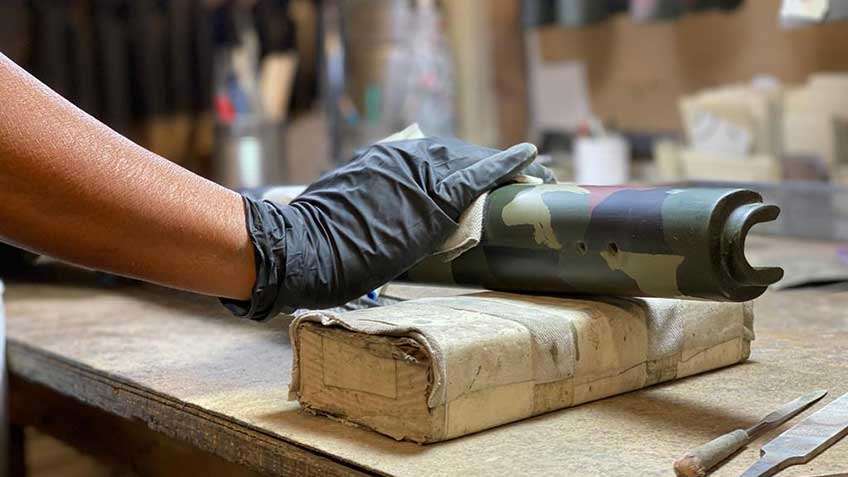
The molds are then clamped together around an inflated bladder which presses resin and fiber into the mold while they cure for 24 hours. There is no oven or kiln heating of the molds. Instead, the room is kept warm so that the curing process can take place at a natural pace for the best results.
The hollow stock shells are then removed from the mold, carefully packed with the selected fill material so as to avoid any gaps or bubbles that would weaken the stock and then allowed to cure for another 3 to 4 days. Once fully cured, the stocks are sent to one of the company's eight CNC mills for shaping and cutting the various inlets for the action, bolt handle, floor plate and the barrel channel.
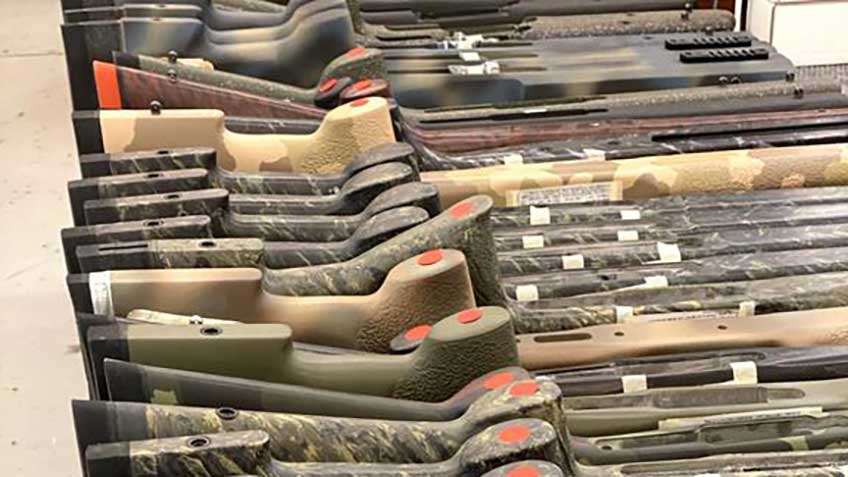
The stock is then hand-fitted to the specific rifle model for which it's made. The company doesn't use guides, models or spec sheets for fitting. They use the actual, production-grade barreled actions and floor plates acquired from the companies that make them. It's McMillan's way of guaranteeing a proper, tight fit. The stock is then sent to another department for hardware installation, after which it travels to the recoil pad station where the pads are attached and hand-ground to match the contours of the shoulder stock.
At the final finish station, any minor dings or scratches are color-matched, filled and sanded out to give the stock a fine, flawless finish. They are then racked up for final inspection by the production manager and granted a red dot on the grip if they meet all of the requirements of his detailed checklist.
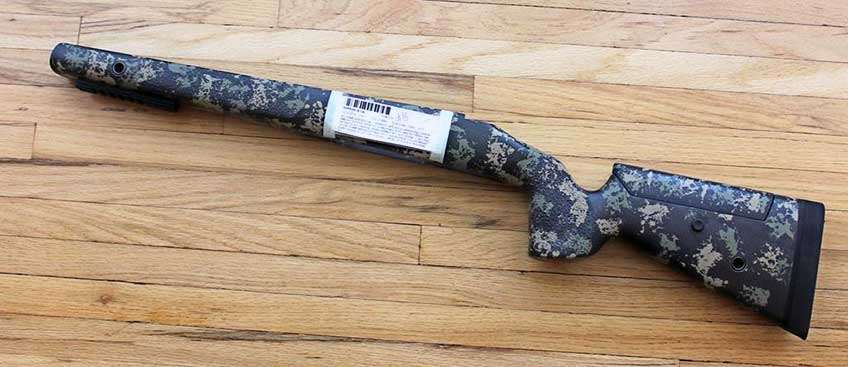
Here's the Adjustable Game Warden stock that I received, which looks every bit as good as I hoped it would. With all of the native hardware in place, it tips the scale at exactly 2-lbs. 8-oz., impressive! I've looked over it carefully and it is wholly free of any surface damage or technical problems. The Howa 1500 action simply slipped into place without any hang-ups. Needless to say, the finished rifle shoulders beautifully!
Up until now, I've been a factory-production fixed rifle stock kind of guy. I've traded out factory stocks for off-the-rack third-party-offerings with positive results. But it's still trading out one set of factory specs for another. Adjusting the length of pull to fit your frame size is always an improvement no matter what style of stock you choose. But for the most part, as a small framed shooter, I've had to adapt my shooting style to fit the stocks I've been dealt.
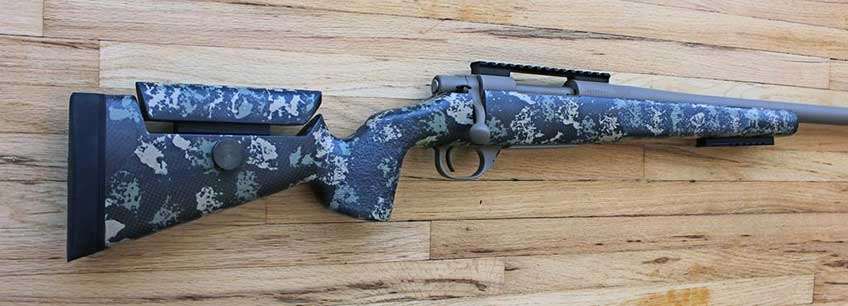
Handling a rifle outfitted with a hand-made, custom tuned light weight McMillan stock has been an eye-opening experience. For the first time, in a long time, I'm handling a bolt-action rifle for hunting and target shooting that feels just right instead of good enough. If you're among those enthusiasts who want to make the most of the rifle they like best, then a custom McMillan stock may be just what you're looking for.
Stock Specifications:
Manufacturer: McMillan Fiberglass Stocks
Model: Adjustable Game Warden
For: Howa 1500 Short Action
Finish: Molded In Woodland Carbon Ambush
Fiber Type: Carbon Fiber
Fill Material: McMillan Edge
Pillars: Machined-In, Aluminum
Recoil Pad: 1" Decelerator, Black Rubber
Length of Pull (LOP): Custom, 13"
Cheek Riser: Adjustable Clamp Bar with Round Knob
Sling Mounts: QD Flush Cup, Front and Rear, Left Side
Bipod Rail: McMillan 4" Picatinny with QD Port, Black
Weight: 2-lbs. 8-oz.
Suggested Retail: $630 - $1,025; $982 (As Configured)












